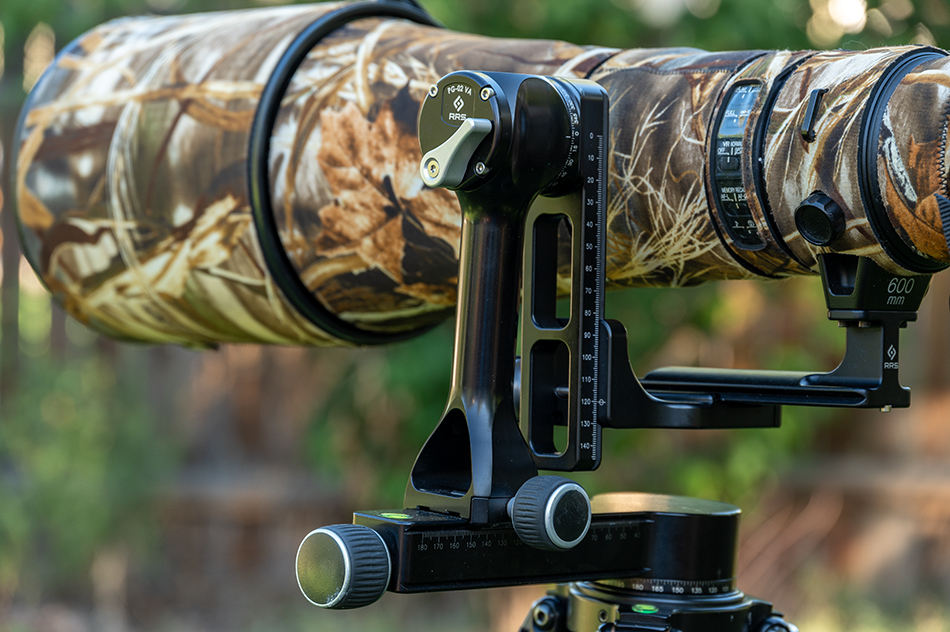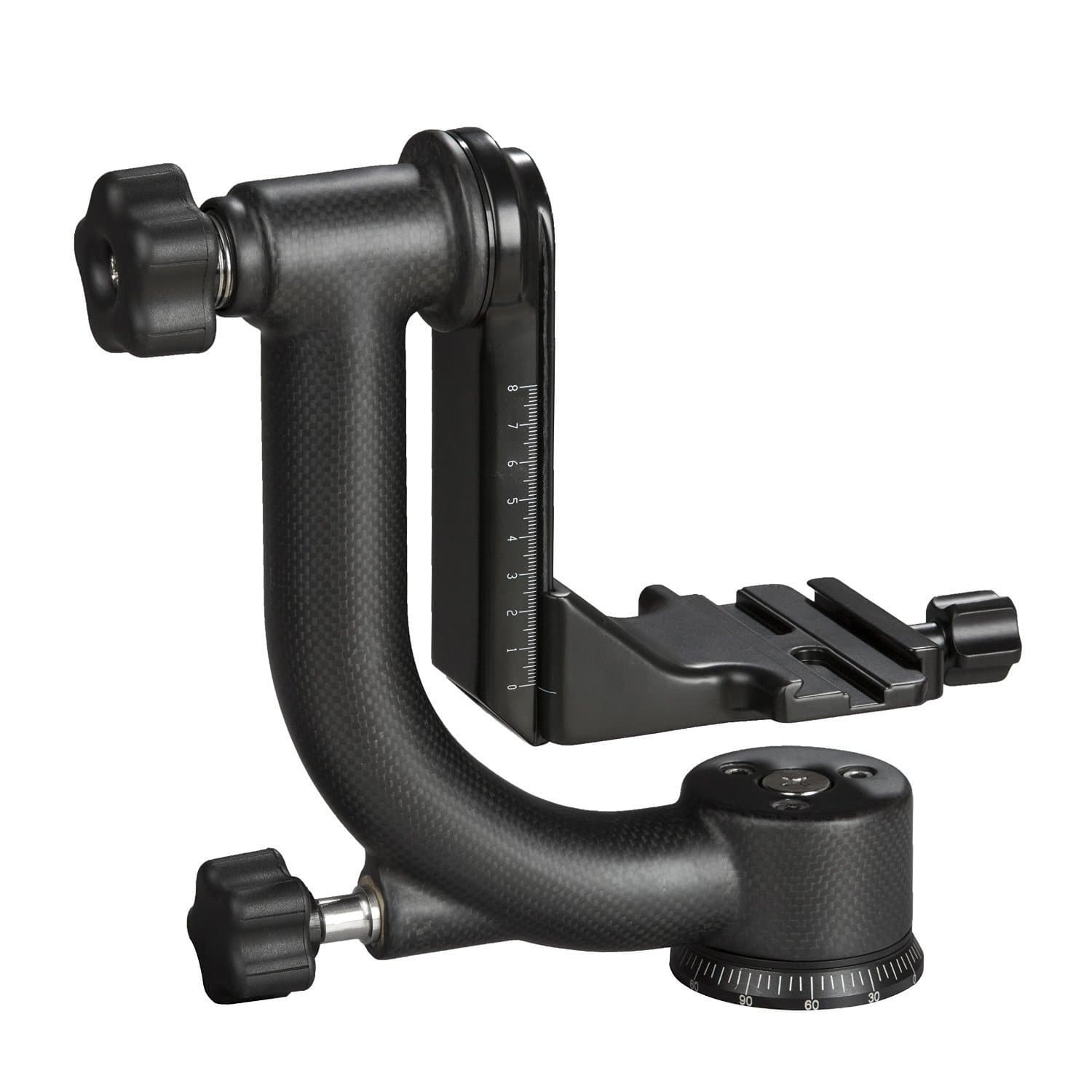A gimbal tripod head offers stability for cameras. It helps capture smooth, professional shots.
Understanding its use can improve your photography skills. A gimbal tripod head is a vital tool for photographers and videographers. It provides a steady platform for shooting, ensuring fluid motion and eliminating shaky footage. Whether you’re capturing wildlife or filming fast-paced action scenes, a gimbal tripod head can enhance your results.
It allows precise movements without the hassle of adjusting your tripod constantly. Learning how to use it can transform your approach to capturing images and videos. This guide will walk you through the process, helping you make the most of this equipment. Discover how to achieve stunning visuals, whether you’re a hobbyist or a professional. Get ready to explore the art of photography with a gimbal tripod head.
Table of Contents
Introduction To Gimbal Tripod Heads
Gimbal tripod heads help photographers take clear pictures. They are great for smooth camera movements. Wildlife and sports photographers love them. Heavy lenses become easy to handle. Balancing is simple with a gimbal head. It moves in all directions. This makes tracking moving subjects easy.
Why Choose A Gimbal Head?
Gimbal heads are perfect for balancing heavy cameras. They give stable support for long lenses. You can adjust quickly with them. They let you follow fast action easily. A gimbal head is great for bird watching too. It helps capture clear shots without shaking. Many professionals choose them for steady photography.
Basic Components Explained
| Component | Function |
|---|---|
| Panning Base | Allows horizontal movement |
| Tilt Arm | Provides vertical movement |
| Clamping Mechanism | Secures the camera |
| Adjustable Knobs | Fine-tune settings |
Setting Up Your Gimbal Head
Place the gimbal head on the tripod. Align the base with the tripod plate. Secure tightly using the locking knob. Make sure it does not move. Check its stability.
Slide the camera onto the gimbal head. Fasten the camera with the mounting screw. Adjust the balance. Tilt the camera gently. Ensure smooth movement. Recheck all screws and knobs. Your camera should be secure.
Balancing Techniques
Start with the camera on your gimbal tripod head. Ensure the camera is secure. Adjust the plate so the camera does not tip forward or backward. Check the horizontal balance. Slide the plate left or right if needed. The camera should stay still at any angle.
Look for any slight tilts. Turn the knobs to make small changes. Make sure the camera is perfectly level. Small movements help in achieving balance. Check the tilt axis once more. The camera should not swing when moved. Practice makes this process easier.

Credit: fstoppers.com
Achieving Smooth Movements
Using a gimbal tripod head helps in getting smooth shots. Counterweights are important for balancing the camera. They help avoid shaky movements. Place counterweights opposite the camera. This balances the setup. It makes movements smoother and easier.
Understanding tilt and pan is key to using a gimbal. Tilt moves the camera up and down. Pan rotates it side to side. Control these movements with the tripod head knobs. Adjust them gently for smooth transitions. Practice makes perfect. Try different angles and speeds. It improves your skills.
Creative Shooting Techniques
Animals move fast. A gimbal tripod head helps. It keeps the camera steady. Smooth panning is possible with it. Follow birds in flight. Capture the deer’s leap. The head moves with ease. It’s perfect for surprise shots. Get close to nature. Stay hidden and quiet. Use a long lens. Zoom without shaking the image. The gimbal supports the weight. No more blurry photos. Every detail is clear.
Sports are all about action. Players run and jump. A gimbal tripod head helps track them. Smooth transitions are key. Keep the subject in frame. The head moves quickly. Capture the ball in play. Follow the athlete’s sprint. Fast movements are easy to catch. Focus stays sharp. The gimbal gives you control. No missed moments. Every shot is precise.

Credit: www.tombolphoto.com
Troubleshooting Common Issues
Operating a gimbal tripod head smoothly involves balancing the camera properly and adjusting tension knobs. Understanding the locking mechanism can prevent unwanted camera movement during shooting. Regularly check for loose components to ensure stability and optimal performance.
Handling Imbalance
Gimbal tripod heads can often face imbalance issues. First, check if the camera is mounted correctly. Ensure all screws are tight. Sometimes, the weight distribution causes imbalance. Adjust the position of the camera. Slide it slightly forward or backward. This helps with balance. If the problem persists, recalibrate the gimbal. Follow the manufacturer’s instructions. Always make sure the gimbal is on a flat surface. A stable base reduces imbalance problems.
Fixing Stiff Movements
Stiff movements can disrupt smooth filming. Check the gimbal’s joints. Lubricate them if needed. Use a proper lubricant. Sometimes, dirt or debris causes stiffness. Clean the gimbal carefully. Avoid harsh chemicals. Adjust the tension settings. Many gimbals allow this. Loosen tight areas. Test the movements again. Smooth motion is vital for good footage.
Maintenance Tips
Gimbal tripod heads offer smooth motion for cameras, perfect for capturing dynamic shots. Regularly check for loose screws to ensure stability. Clean moving parts gently to prevent dust buildup, maintaining fluid movement and prolonging the equipment’s life.
Cleaning And Care
Keep your gimbal tripod head clean for better performance. Use a soft cloth to wipe it down. Avoid using water or any liquids. Dust particles can affect its movement. Gently brush dust away. Check for any loose parts. Tighten them if needed. Lubricate moving parts sparingly. Use only recommended lubricants. Make sure no dust sticks to it. Proper care ensures long life.
Storage Recommendations
Store in a cool, dry place. Avoid direct sunlight. Sunlight can damage the material. Use a storage bag if available. Protect from moisture. Moisture can cause rust. Keep away from children. It is not a toy. Ensure it’s not under heavy items. Heavy items can damage it. Proper storage keeps it safe. Ready for the next use.
Advanced Tips And Tricks
Master the art of capturing smooth footage with a gimbal tripod head. Improve your skills by balancing your camera correctly and exploring different angles. Practice adjusting the gimbal for fluid motion, ensuring professional-looking videos and photos.
Using In Different Weather Conditions
A gimbal tripod head can work in many weather types. Rain might make things tricky. Use a rain cover to protect your camera. Windy days may cause shaking. Add a weight to your tripod for stability. Sunny weather can create glare. Use a lens hood to fix this. In cold weather, batteries might drain fast. Keep spare batteries warm in a pocket.
Experimenting With Angles
Try different angles for creative shots. Low angles can make subjects look larger. High angles can capture more background. Side angles give a new perspective. Move the tripod gently to find the best view. Use the gimbal for smooth movement. Experiment with tilting the camera up and down. Each angle tells a different story.

Credit: www.movophoto.com
Frequently Asked Questions
What Does A Gimbal Tripod Head Do?
A gimbal tripod head allows smooth, controlled camera movement for tracking fast-moving subjects. It balances the camera’s weight, reducing strain. Ideal for wildlife or sports photography, it provides stability and fluid motion. This setup enhances precision and ensures professional-quality shots without camera shake or jitter.
How Do You Attach A Gimbal Head To A Tripod?
Attach the gimbal head by screwing it onto the tripod’s mounting plate. Ensure it’s securely tightened. Adjust the gimbal head to fit your camera or lens, balancing it for smooth movement. Check stability before use to prevent any wobbling.
How To Balance A Gimbal Head?
To balance a gimbal head, mount your camera and lens. Adjust the vertical and horizontal axes. Ensure the camera stays still when tilted. Tighten the knobs securely. Test by rotating smoothly in all directions.
How Do You Set Up A Tripod Head?
Secure the tripod legs first. Attach the head by aligning it with the mounting plate. Tighten the screws or knobs. Adjust the head’s position as needed. Ensure stability by checking all connections.
Conclusion
Mastering a gimbal tripod head enhances your photography skills. Smooth pans and tilts create stunning shots. Practice often to gain confidence. Experiment with angles and movements. Adjust settings for different scenes. Use slow, steady motions for best results. Proper setup ensures stability.
Explore creative possibilities with your gimbal. Capture breathtaking landscapes and dynamic action shots. Share your photos and enjoy feedback. Remember, patience and practice lead to improvement. Enjoy your journey in photography. Keep experimenting and learning. Your skills will grow over time.